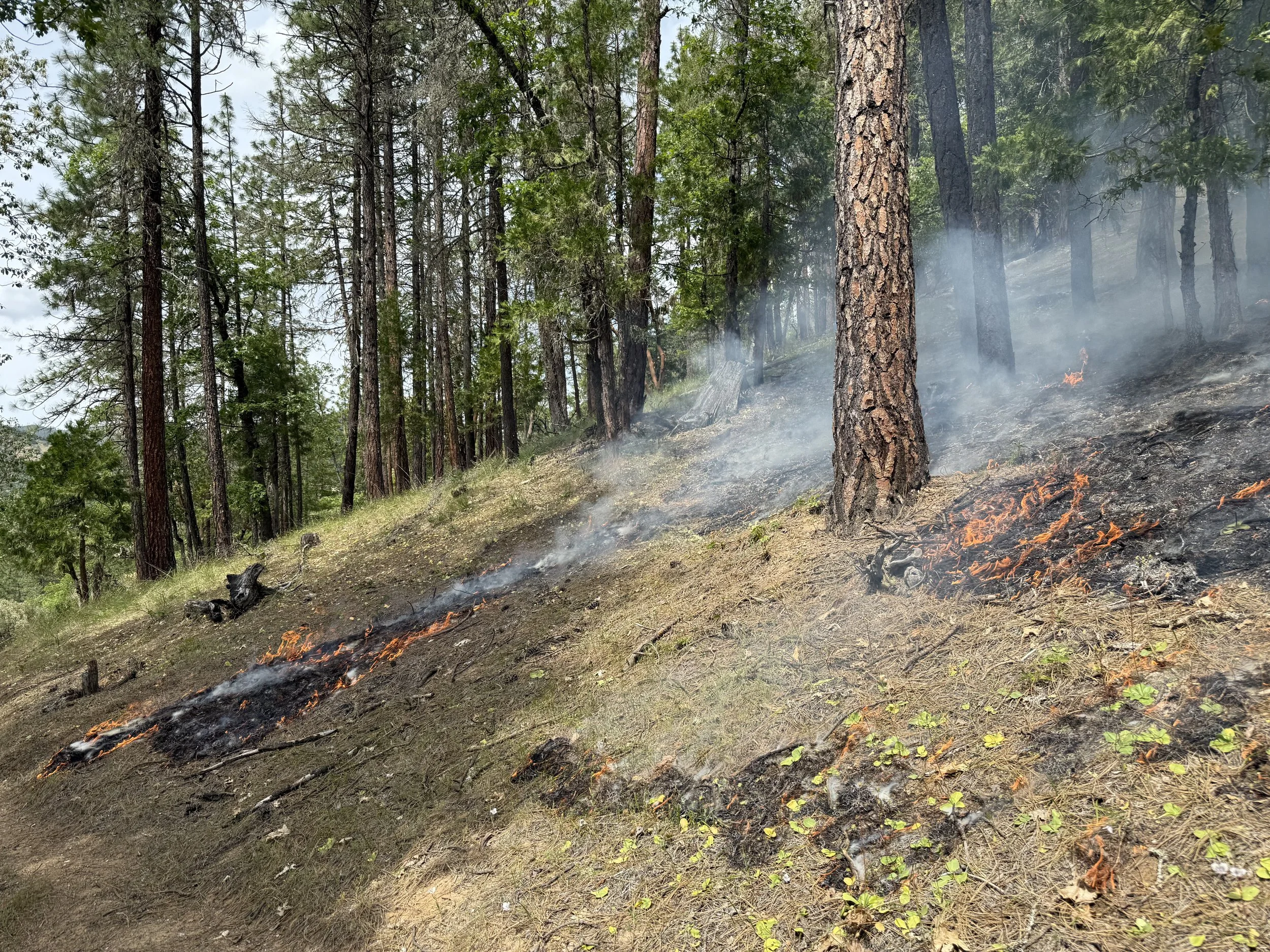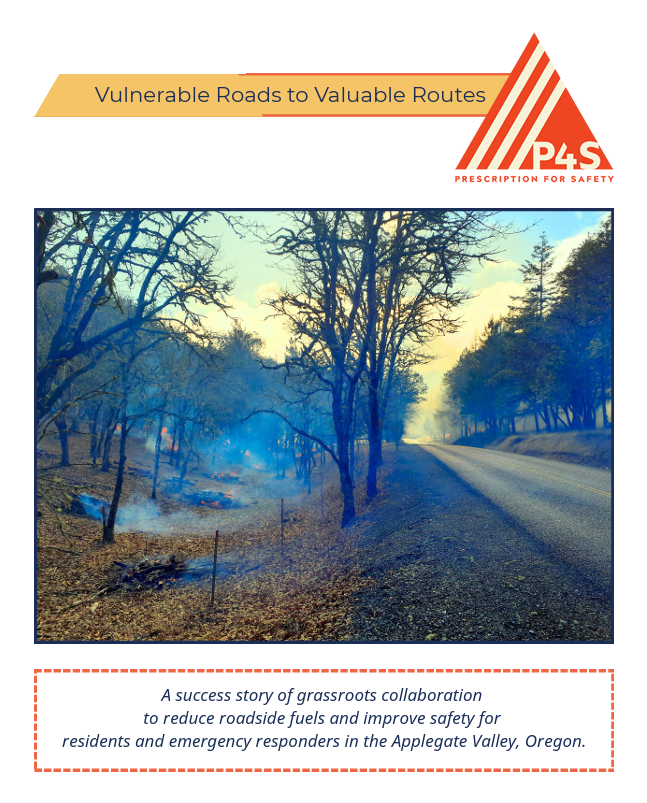Prescription for Safety
Prescription for Safety (P4S) is a community led group located in the Little Applegate in Southern Oregon, focused on implementing fuels treatments along critical evacuation routes in the area. These routes include: Highway 238, Griffin lane, Humbug Creek Road and Sterling Creek Road- main routes used to evacuate the Little Applegate. In order to make these evacuation routes safe, the vegetation on either side must be maintained to reduce flammable fuel build up. Having well managed roadside vegetation makes evacuation safer, wildfire suppression more efficient, and makes controlled burning much safer, all of which makes it possible to reduce the potential for high severity wildfire and possible human tragedy here in the Applegate. This is strategic fuel treatment to provide egress, facilitate safer fire suppression and encourage more prescribed fire.
Through a wildfire planning strategy known as PODs (Potential Operational Delineations), Oregon State University scientists have identified roads in the Little Applegate that could be used to help contain wildfires. Some fire practitioners remember the old Pre-attack Plans, a similar concept but now updated with software and modern fire modeling. The PODs show where the best places are to stop a fire. P4S has taken these lines, combined them with some local knowledge about possible evacuation routes and come up with priority roads for treatment.
P4S’s goal was to have most of this work funded through grants, so the landowner pays no cost. P4S has received grants totaling $80,000. After hosting community meetings, we had 35 landowners who live on the main evacuation roads sign up for free property assessments. Assessments were conducted by pairs of skilled fuels assessors doing a visit to each property to determine what treatment is needed. To complete the assessments, P4S teamed up with the OSU Extension’s My Southern Oregon Woodlands and their peer mentors. Peer mentors are already doing property assessments and are generally graduates of the Certified Master Woodland Manager program.
Treated forests tend to burn at low severity
After assessments were completed, we were able to thin and pile a few properties. Once others saw how the treatments looked, there was a real clamor to sign up, with 85 landowners eventually signing up for property assessments.
We were able to contract with the well-known Lomakatsi Restoration Project to do most of the work. By the beginning of the 2023 fire season, there were long stretches of road where the forest was open and there was little surface fuel.
To summarize, P4S worked to make certain roads play these roles: safe evacuation routes, fire lines and anchor points, strategic fuel treatment, and safer for an increase in controlled fire. P4S has received help, advice and major staff time from Southern Oregon Restoration Collaborative (SOFRC), Jackson County Extension, KS Wild, Oregon Department of Forestry, and OSU College of Forestry.
To learn more about P4S or to get involved, contact Rich Fairbanks at richfairbanks3@gmail.com.
Read the full report:




